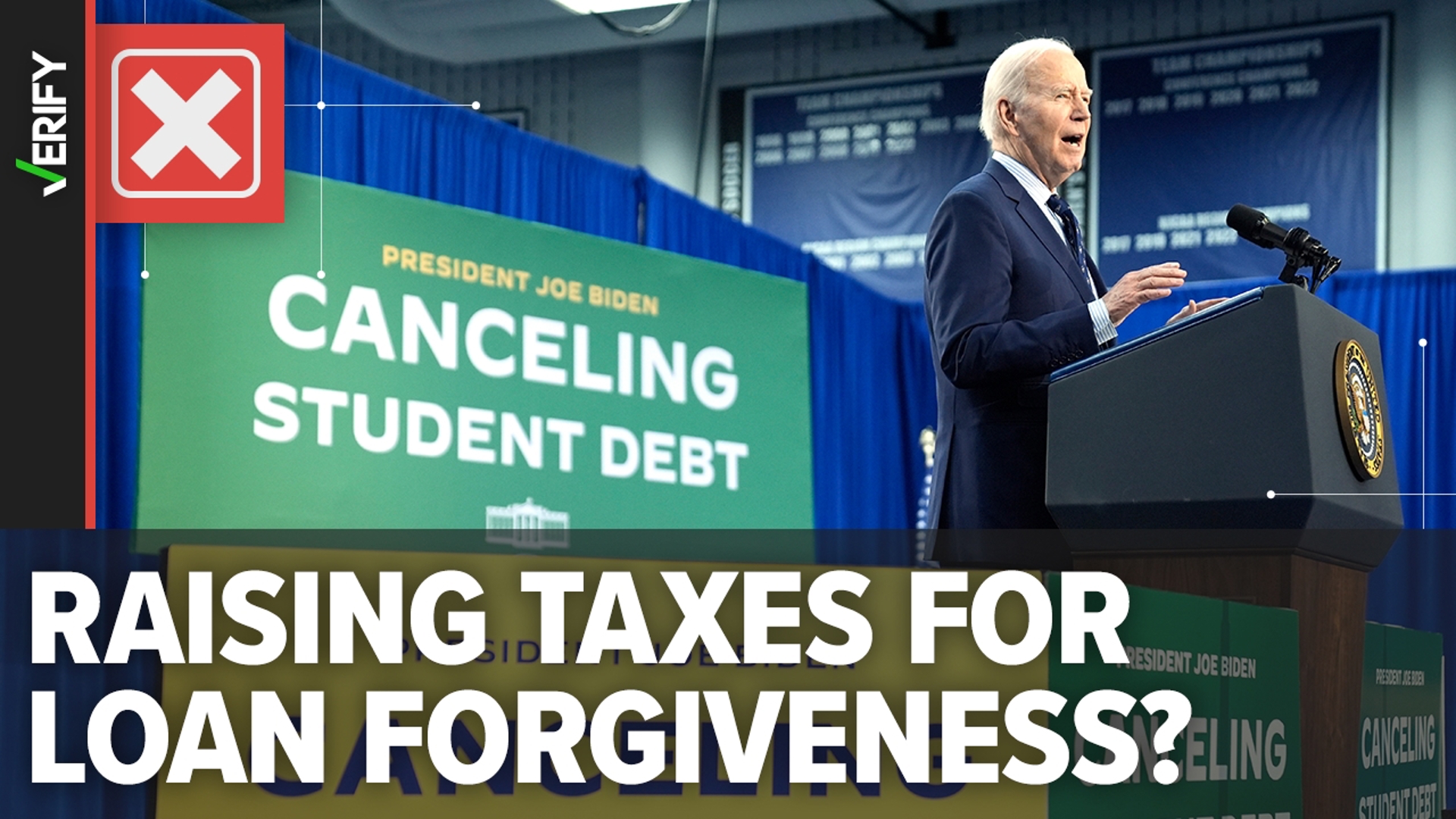In April, the Biden administration announced its latest student loan forgiveness plan, which targets people who have paid excess interest, people eligible for SAVE plans and people who have been paying back their loans for more than 20 years.
Several VERIFY readers asked us if taxes would go up to pay for student loan forgiveness.
THE QUESTION
Is the government raising taxes to pay for student debt relief?
THE SOURCES
THE ANSWER
No, the government is not raising taxes to pay for student debt relief.
WHAT WE FOUND
The budget impacts of student loan forgiveness do not come in the form of new spending, but are instead based on a loss of revenue for the federal government. The Biden administration’s previous student debt relief announcements have made no mention of a tax increase, which can only come from Congress.
The U.S. Constitution only gives Congress the power to set and collect federal taxes. So Congress would have to pass a bill amending the Internal Revenue Code (IRC), the governing law of federal tax collection, in order to raise taxes to pay for student loan forgiveness. This hasn’t happened nor has it been proposed.
In its proposed rule for the administration’s latest student debt relief plan, the U.S. Department of Education mentions nothing about raising taxes. The Education Department hasn’t mentioned raising taxes in its announcements and neither has the White House.
According to the University of Pennsylvania Wharton Budget Model (PWBM), the Biden administration’s latest plan will cost the federal government about $84 billion. The Department of Education, however, estimated the student debt relief plan will cost the government $147 billion over the next 10 years.
But the federal government doesn’t have to pay anything to forgive student loans. The “cost” instead refers to the anticipated revenue the government loses by forgiving the loans.
“Canceling student debt has no immediate impact on the national debt. The money that funded the loans is already out the door,” the Urban Institute says. “But the debt will eventually be higher because the debts don’t get paid back. That increase shows up over time when expected future loan payments do not get made.”
Every time a student borrower makes a payment on their federal student loan debt, the government can then use that money to pay for something else. The government has to get that money from somewhere else if the borrower doesn’t make their federal student loan payments.
And that “somewhere else” is, by default, borrowing it.
“The federal debt decreases when borrowers make loan payments,” the Urban Institute explains. “The government receives the money and thus, can borrow less than it otherwise would.”
In May 2022, the U.S. Government Accountability Office (GAO) warned that the current federal deficit is at unsustainable levels. The government has two options to decrease the annual deficit: spend less money or make more of it.
Forbes says some analysts believe the cost of student loan forgiveness could eventually hit taxpayers if or when the government tries to reduce the deficit. Spending less money could mean cutting funds to other programs, while making more money could mean raising taxes.
If the federal government wanted to raise taxes or cut spending on other programs, it would have to come from Congress, which has authority over both taxation and the federal budget.
But exactly how much the plan costs the federal government isn’t and can’t ever be known. That’s because there’s no way to know how much of their loan and how much interest the borrower receiving forgiveness would otherwise pay without it.
Sometimes borrowers are never able to pay back their full loan, in which case they default. Sometimes borrowers’ balances increase despite monthly payments because of growing interest and the borrower ends up paying the government more than it anticipated.

